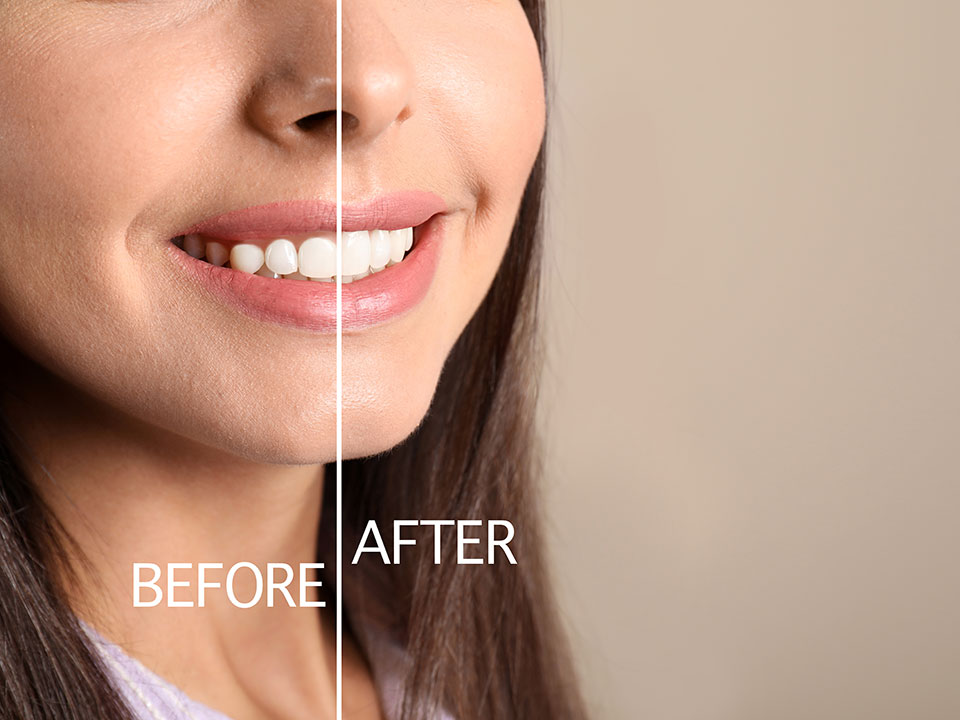Every gum is unique. If you take a moment to look at your gum, you will notice distinct bulges and ridges. However, these bulges and bumps can appear more pronounced, affecting the appearance of your smile.
In addition, if your gum tissue is too low or high, you might feel self-conscious about your teeth. Gum contouring is a simple fix if you have a gummy smile or small teeth.
The information below examines gum contouring and answers multiple questions related to the dental procedure.
What is Gum Contouring?
Gum contouring, also known as gingivoplasty or gingival sculpting, is a dental procedure that reshapes gum tissue. The procedure enhances your gum’s appearance and prevents oral issues.
During the procedure, excess gum tissues are removed around the teeth, giving them more symmetry. In addition, gum contouring is an ideal way to restore tissues if you have receding gums.
In most cases, gum contouring is an elective procedure. The surgery is done as a cosmetic dental procedure to improve your appearance.
However, your dentist can recommend the procedure if you have an underlying gum complication that affects your oral health.
It is important to always consult with your dentist before undertaking any oral surgical procedures.
When Should You Get Gum Contouring?
For most people, gum contouring surgery depends on how comfortable they are showing off their smile. If uneven gums are giving you trouble, it is always good to get the procedure.
However, if you have periodontal disease or receding gum, you should always wait for your dentist to give you the go-ahead. Your doctor can employ many available surgical and non-surgical therapies to improve your oral health. Such treatments include grafting, dental cleaning, and getting prescribed antibiotics to manage the infection.
If all efforts fail, then your dentist can recommend a gingivectomy. Gingivectomy is a gum contouring procedure to remove diseased or dead gum tissues.
What Happens During a Gum Contouring Procedure?
A dentist or periodontist performs the procedure. Depending on the type of therapy that suits you, a mixture of lasers, scalpels, and radiosurgery is used during surgery.
It is important to note that the depth of your tooth limits how much tissue can be cut out. The dentist will perform several tests and examinations to determine the extent of the procedure.
The dentist will then advise you on the best type of technique that will help even out your gummy smile.
Before the procedure, the periodontist will draw the lines to mark your new gum lining. This will allow you to see which tissues will be removed and how your new gum lining will look.
Afterwards, the practitioner will administer local anesthesia to numb the gum. Sometimes, small amounts of the enamel might have to be removed to get that perfect long-lasting smile. The procedure is relatively simple, and you will be back home on the same day.
Does Gum Contouring Hurt?
As stated before, the dentist will use local anesthesia to numb your gums before the procedure.
It is not uncommon to feel a bit of discomfort during the procedure. The level of discomfort depends on the amount of work needed to remove and reshape your gum line to get the best results.
After the procedure, you will notice a slight numbness, pain, and tingling sensation in the gum. Your doctor may prescribe pain medication to help relieve further discomfort and pain. However, do not buy over-the-counter medication without first talking to your doctor.
You might also notice some swelling, redness, and inflammation in your gums after the procedure. You can apply a cold press or an ice pack to help relieve the discomfort. However, talk to your doctor if the swelling does not go down after a while.
How Long Does It Take to Recover After Gum Contouring?
Depending on the extent of the procedure, your recovery can take a few days to a few weeks. During recovery, you might notice that your gums and mouth are tender and sensitive, but it should not worry you.
Recovery Tips after Gum Contouring
There are some important keynotes that you should remember to improve your recovery. First, it is important to avoid heavy physical activities to avoid straining the gum.
In addition, you also need to eat soft foods for the first few days to prevent tearing the gum. These foods include:
- Eggs
- Soup
- Soft vegetables
- Jell-O
- Yogurt
- Cheese
Avoid eating spicy foods as they can irritate your gums. The doctor can advise you on the appropriate post-surgery dietary foods to take.
You might have an infection if you notice prolonged swelling, bad breath, discharge, or pain from your gums or mouth. Talk to your dentist immediately to prevent further complications.
What are the Risks of Gum Contouring?
In most cases, the procedure runs smoothly, and your recovery should not be a problem. However, like any other medical procedure, contouring has some risks. They include:
- Allergic reactions to the local anesthesia
- Post recovery infections
- Relapse of gum tissue
Always talk to your doctor if you have concerns about the procedure.
What is the Cost of Gum Contouring?
The cost of getting gum contouring surgery depends on the extent of gum reshaping needed.
If you are getting treatment for cosmetic purposes, your health insurance might not cover the cost. However, if you are treating an underlying dental condition, talk to your insurance and find out if they will have you covered.
Do the Results of Gum Contouring Last?
In most cases, the effects of the procedure are permanent, and you will retain your new smile. However, some people suffer from relapsing gum tissue and may need a series of surgeries to get it fixed.
Gum Contouring vs. Gum Grafting
The main difference between gum contouring and grafting is that gum contouring removes and reshapes the appearance of your gum. On the other hand, gum grafting is used to restore tissue when your gum has receded.
If you are looking to alter your gummy smile or even your gums, All About Smile Dental Group is here to help. Our dentists have the proper training to deal with gum-related restorations to give you back your smile.







